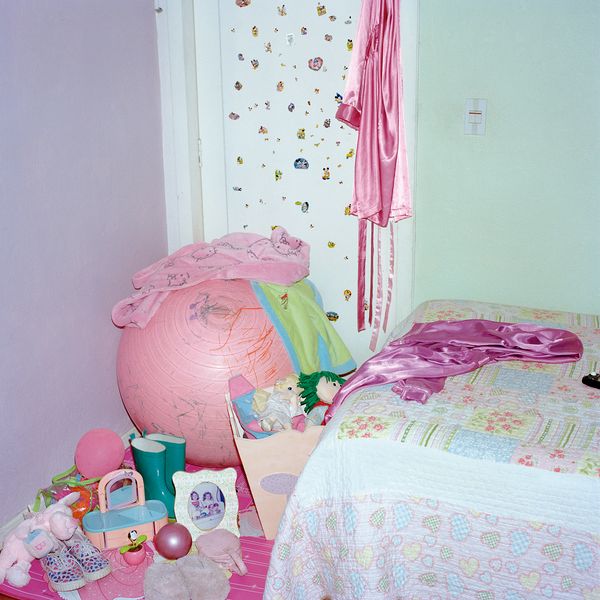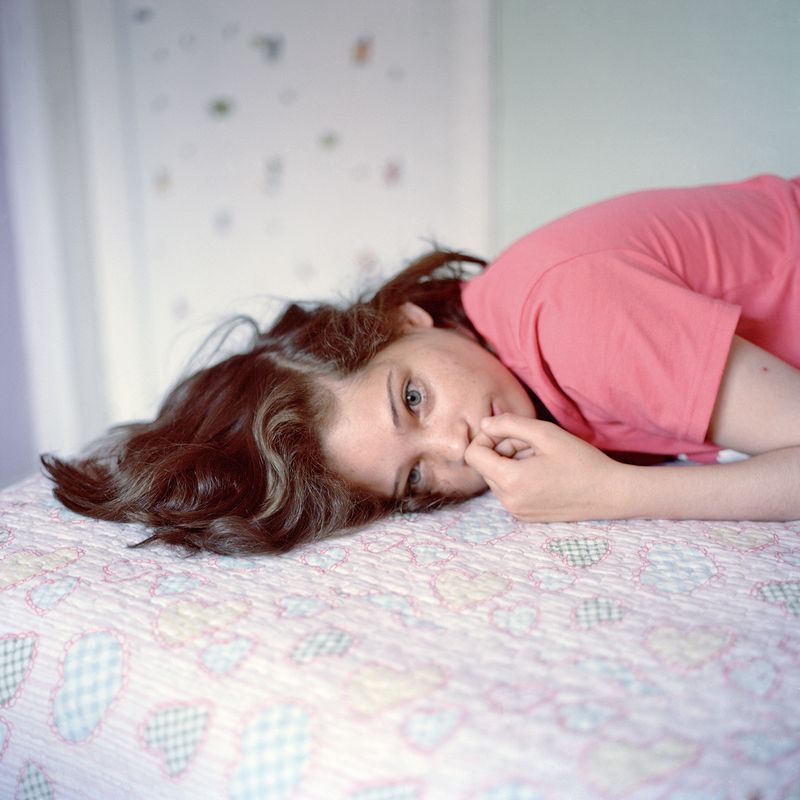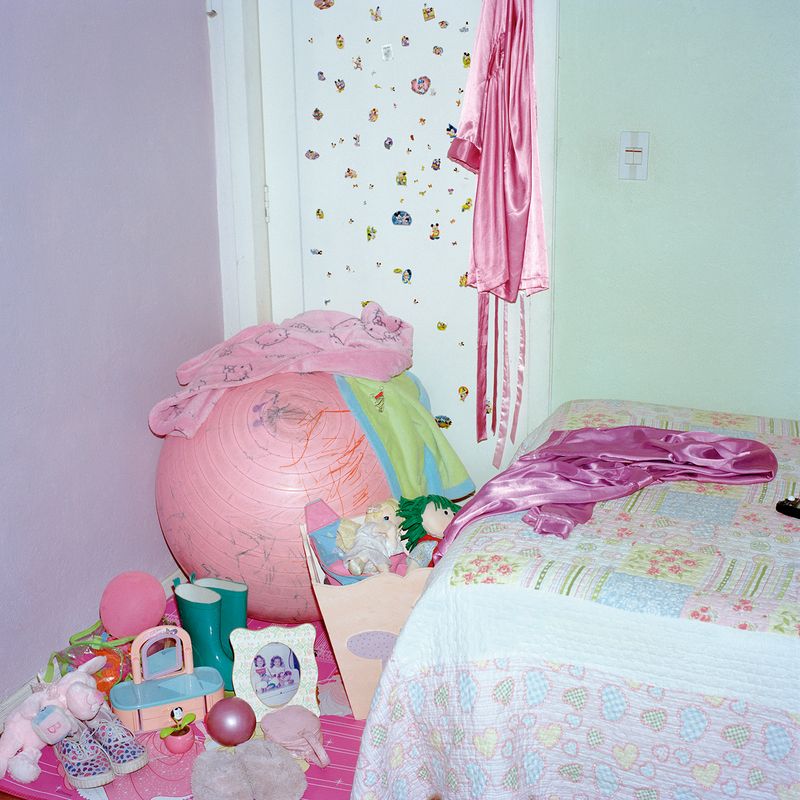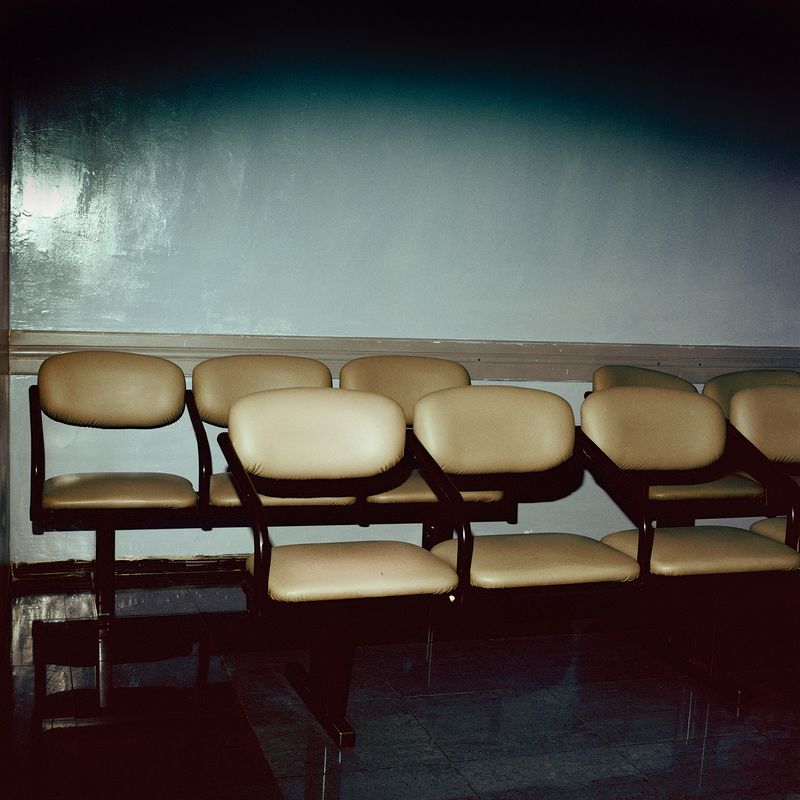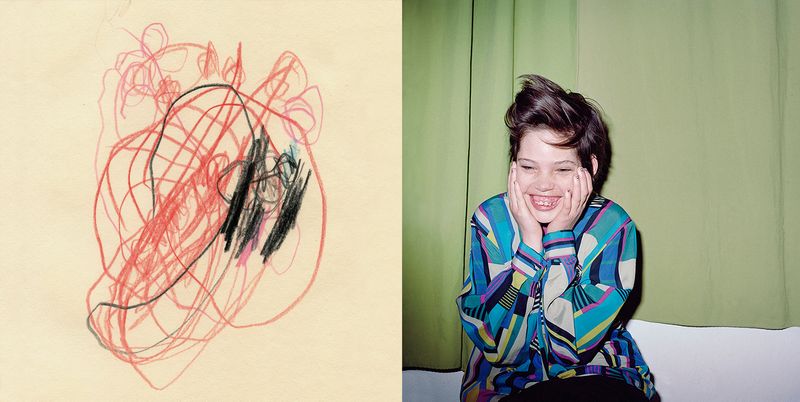An Exploration of A Complex Sisterhood
-
Published13 Dec 2017
-
Author
Ecuadorian photographer Fabiola Cedillo, recipient of the PHM 2017 Women Photographers Grant New Generation Prize, delves into the life of her older sister as well as her own interior world.
Ecuadorian photographer Fabiola Cedillo, recipient of the PHM 2017 Women Photographers Grant New Generation Prize, delves into the life of her older sister as well as her own interior world.
In one picture, a young girl, clad in pink, flops across her bed, eyes wide open to the thoughts dashing through her mind. In another, two rows of empty chairs emerge from an eerie room. Elsewhere, a horse rests in a shadowy stall. And a tattooed man curls into a makeshift tub too small for his stature. Scattered images compose Cedillo’s dreamlike scenes, at times confusing and surreal, at times painful but clear.
In her series Los Mundos de Tita, Cedillo felt a personal need to traverse places like these, articulating her emotions by capturing whatever entranced her along the way. "I like to photograph things that generate some feelings in me that I don't understand and [that] I want to understand better. Through photographs, I can try to make sense of [them] later.”
What needed to be explored were her relationships with her older sister Tita, her parents, and the spaces she’s inhabited as a child and teen. When her father questioned the sadness in her images, Cedillo promptly explained her need to express herself. Soon enough, two photographs emerged, “like the seeds that started the project”: the photo of her sister in a pink shirt, laying wide-eyed on her bed; and an image of Tita's room, her toys on the floor and pink clothes on the cot. The coincidental recurrence of the color triggered a revelation: pink denoted the universe of a child but also a divergence between the two sisters that became increasingly tangible as Tita and Fabiola grew older, inhabiting different spaces and worlds.
Only two years apart, the sisters grew up together in Ecuador, sharing schools, clothes, and friends. However, Tita was born with West syndrome, a rare brain disorder that generates muscle contractions, producing a psychomotor and developmental delay. Their parents divorced two months after Fabiola’s birth, never to speak again, the two sisters the only emissaries in the family.
A looming desire to break through and break free, common among teenagers, permeates Cedillo’s project. Images of darkness disrupted by a flash speak of her frustration, mixed with the attachment and responsibility Cedillo felt toward her sister. But the images also mimic the way Tita experienced reality: scattered, discontinuous, intermittent: her epileptic attacks like sudden flashes suspending time. “Those dark images try to portray the fact that I didn't understand some things about Tita and her condition,” Fabiola recalls. “My unconscious was the one taking the pictures, because some of the images are strange, not comprehensible, and I think that's the connection with that frustration I had and that I felt during that time being a teenager.”
A glitch in the machine developing the film affected some images, but Cedillo took them as opportunities to illustrate something more than her resentment and confusion: “I decided to use these photos as analogies for Tita,” she recalls, “talking about how something that's not perfect can also be useful and we can also use it, and it serves its purpose as well.”
Moreover, Fabiola aimed to bring the family together with her subsequent photobook. Tita became a co-author, as one of her drawings graces the cover. Pictures taken by their mother when they were kids - usually hanging on the refrigerator door - also appear in the book. Similarly, the text about Tita’s condition that accompanies the photos was written by their father.
Depicting her sister’s life with tenderness and empathy, never shying away from uncharted territory, Cedillo intimately surveys her own interiority as well as her family’s, mixing it all in this unique record of the different dimensions we inhabit.
“How real is what we're living,” she wonders, “and how much of a fantasy is what we're imagining in our heads. In Tita, it is easier to see that, because our reality is not her reality, and her fantasy is actually her reality.”
--------------
Fabiola Cedillo is an Ecuadorian sculptor and photographer and the recipient of the PHM 2017 Women Photographers Grant New Generation Prize.
Lucia De Stefani is a multimedia reporter focusing on photography, illustration, culture, and everything teens. She lives between New York and Italy. Find her on Twitter and Instagram.

